Palmistry lines reading, meaning the palm line of life, fortune and fate., Page #2: Mount of Apollo, Mount of Mercury, Lower Mars Mount, Plain of Mars, Mount of Pluto, Moon Mount, Mount of Neptune
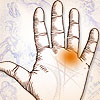 The Mount of Apollo
The Mount of Apollo
In some schools of palmistry, the mount of Apollo is referred to as the mount of the sun. While this type of palmistry tries to relate to the original Geek method most closely, the comparison to the sun should give you a good idea of just how important and seemingly all encompassing this mount is. The mount of Apollo plays a huge role in the prediction of future events in palmistry. Keep reading to find out what that role is.
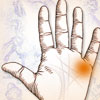 The Mount of Mercury
The Mount of Mercury
Although the different schools of palmistry all seem to try to incorporate many elements to add to the complexity of palm reading in general, the two most important aspects of the palm are the lines and the mounts. This applies to nearly every school of palm reading. No matter what type of study it is, or what the mounts are called, the mounts will always be present in an interpretation as well as the lines.
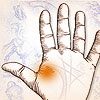 The Lower Mars Mount
The Lower Mars Mount
The lower mars mount can often be a tough one to understand because of how it is understood in different types of palmistry. Many people believe that the lower mars mount is called the positive mars mount or the negative mars mount. Some people confuse the mount of Pluto with another mars mount because this is one of the most argued about palm placements. For our purposes of studying palmistry, the lower mars mount and the plane of mars will be the only two mars related mounts that will be discussed. Whether there is a higher mars, or whether they should be called positive or negative mounts can be debated another time, but the purpose of this now is merely for education and recreation.
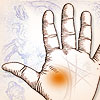 The Plain of Mars
The Plain of Mars
Many palm readers debate what the true meaning of the plain of mars is, or whether it should be considered a mount at all. The middle of the palm, the literal plain where no other mounts are located, is more of a depression than anything. This means that the plain must be read almost inverse of how other mounts would be read. While the significance of a mount is usually determined by how prominent it is when compared with other mounts, the significance of the plain of mars is usually determined by how far the depression is, as the hand already has a natural depression in this area.
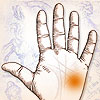 The Mount of Pluto
The Mount of Pluto
The mount of Pluto is generally regarded as one of the most well understood mounts in all of palmistry because of all of the seemingly obvious interpretations that it has. While the mount of Pluto itself is mysterious and vague in its general interpretation, when a person is told of the meaning of the mount of Pluto, they are usually able to immediately tie the significance back to their life and explain the meaning. This is because the mount of Pluto means change, and change is something that everyone is familiar with.
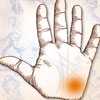 The Moon Mount
The Moon Mount
The moon mount is a mount in palmistry that comprises quite a few different attributes. This may be because of the different meanings of the moon in different cultures. It is a well known fact that after the dispersion of palmistry through hundreds of different cultures since its creation, there have been many different interpretations of the craft since then. Each of these interpretations draws upon the meanings of the gods and the mounts within their own culture. Because the moon has so many different meanings all around the world, this could be one reason why it is so difficult to pin down into one definition.
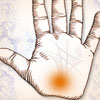 The Mount of Neptune
The Mount of Neptune
It is a rare mount and one that is not often include in a palmist's interpretation because of how hard it is to find. It is usually mistaken for a segment of the Venus mount. Because the Neptune mount is missing in most people or does not have dominance over any of the other possible mounts on the palm, it is also misunderstood. Like the mount of the moon, it is usually determined that this has something to do with a person's intuitive character, but in fact, it has more to do with sensitivity than anything.